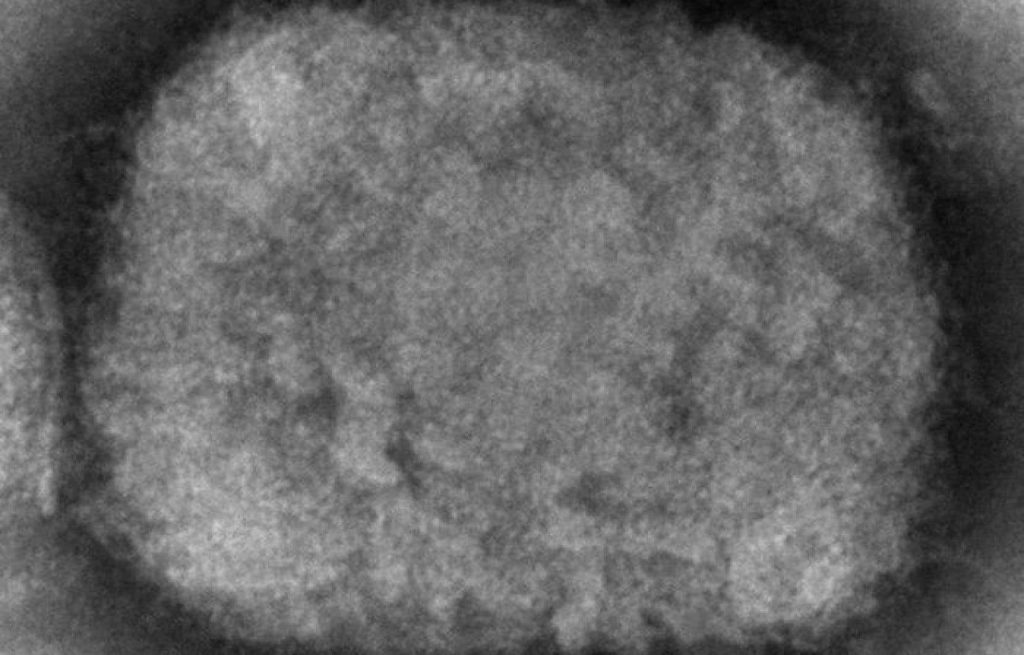Canada currently has 112 confirmed cases of monkeypox, the vast majority of which, 98, are in Quebec.
Canada’s Director of Public Health and Deputy Doctors Theresa Tam and Howard Ngo provided an update on the outbreak of this virus on Friday in Ottawa.
In all cases, they are men between the ages of 20 and 63 and most of them have had sexual relations with other men. However, Dr. Tam noted that the entire population can be affected by this virus.
However, the increase in the number of cases in one week in Quebec was much less than in the past two weeks, but Dr. Ngo did not want to take the risk of saying that we were able to limit the spread of the disease.
Frankly, it is too early to draw conclusions. […] We will see in the coming days and weeks what the evolution of the epidemic curve is in Quebec, but also across the country.
“We hope that the strategy of continuing to follow up on contacts and offering vaccines in places where there are high-risk events will have an impact on the epidemic curve,” the doctor said.
Universal Vaccination: Neither Necessary nor Possible
The other identified cases are nine in Ontario, four in Alberta and one in British Columbia. The National Microbiology Laboratory is also looking into other suspected cases.
“We are preparing to confirm other cases in the coming days and weeks,” Dr. Ngo warned.
However, National Public Health believes that there is no need for a mass vaccination campaign at this time. New recommendations regarding the administration of IMVAMUNE suggest that only one dose be given to people at high risk of exposure to the virus and to those in places where the risk of transmission is high.
It wouldn’t be possible to contemplate a national vaccination campaign anyway since there aren’t enough vaccines, Howard Ngo admitted.
The Government of Canada is still working with manufacturers to buy other vaccines […] But you always have to keep in mind the possibility of a biological event with smallpox,” he explained, noting that Canada could not afford full exposure to smallpox in the event of a ‘classical’ smallpox outbreak.
“We don’t have an unlimited amount of vaccines, but if we use them with a good strategic approach, taking care to calm the outbreak if possible, because it may only be the beginning, we have a better chance of preventing monkeypox here in Canada.”
The two doctors also noted that the Canadian cases are all linked to the international outbreak currently affecting other countries around the world.
COVID-19We have passed the sixth wave.
Doctors Tam and Ngo also gave an update on the coronavirus situation, especially addressing the issue of vaccination.
In general, we can say that we are now past the last wave, the sixth wave, across the country, and usually, during the summer, virus activity is lower compared to the winter if we believe the past. “But it’s still important to keep monitoring because we don’t know what will happen in the fall and winter when people start to gather indoors again,” Howard Ngo said.
For her part, Theresa Tam says she is planning a new awareness campaign in the fall to encourage people to take a third dose. Two doses are not enough to provide protection against infection with (substitute) OMICRON because immunity wanes over time and certainly after six months. So you need a third dose to restore immunity to a higher level.
The data collected through several studies on this topic prove this to be true. She thus explained that after six months, the protection provided by two doses of omicron drops below 20%. On the other hand, protection against severe consequences of infection remains strong, between 65% and 85%, depending on the studies, the population studied, etc.
On the other hand, adding a third dose provides 50% to 60% protection against infection, although studies as a whole show a much wider range (40% to 80%). On the other hand, protection against severe consequences is very strong, at 90%, with a third dose.
But Theresa Tam warned that protection here, too, would not be eternal.
“It will decrease over time, but we don’t have enough data to measure it yet,” she said. Not only can it decrease over time, but a variable can also change the game and reduce protection. It is never a fixed number.
Let’s see in the video

“Music guru. Incurable web practitioner. Thinker. Lifelong zombie junkie. Tv buff. Typical organizer. Evil beer scholar.”






More Stories
A large manufacturing project awaits space in the industrial zone
According to science, here are officially the two most beautiful first names in the world
Green space, 100% pedestrianized: DIX30 reinvents itself